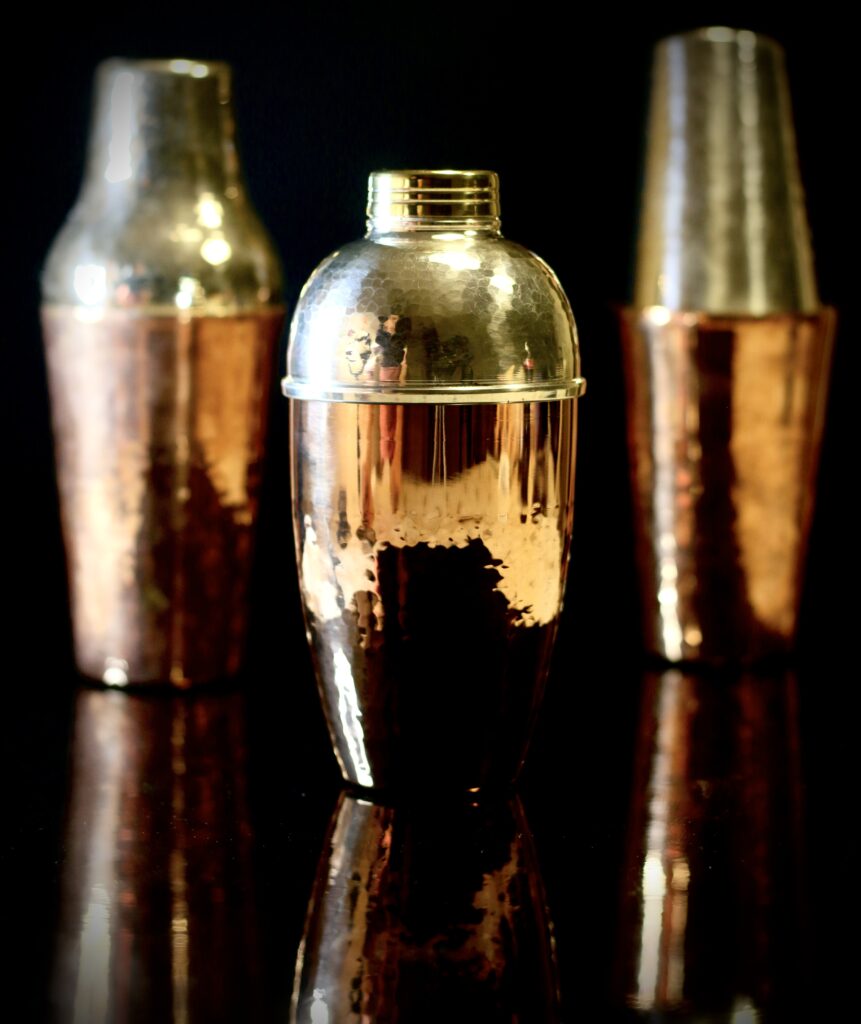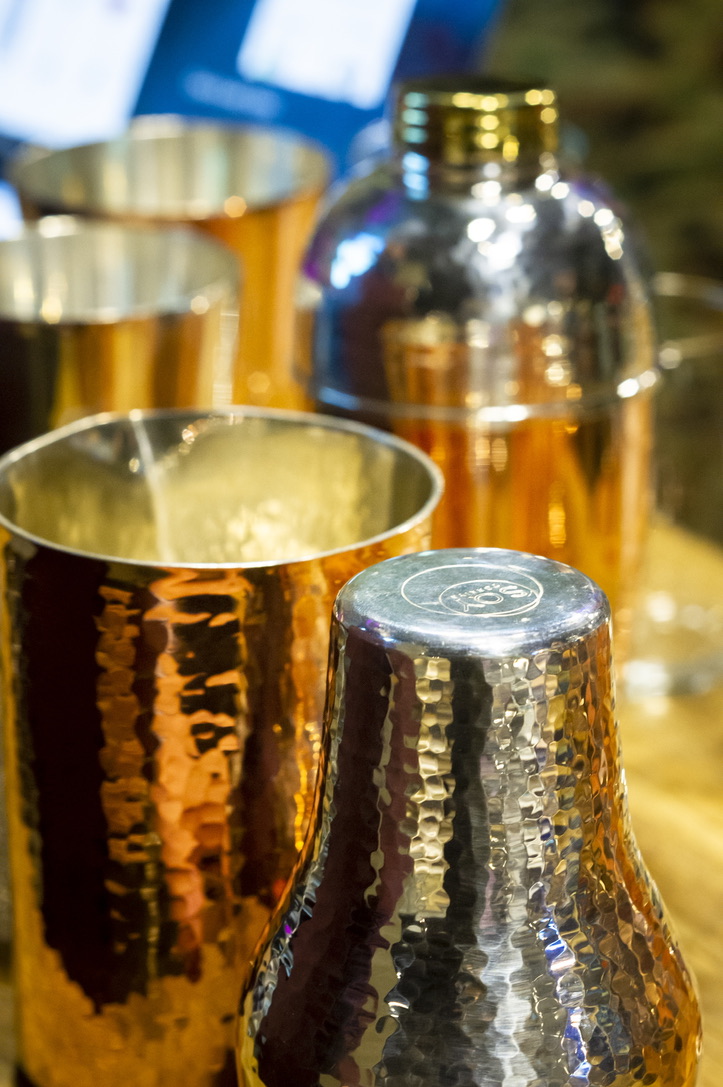Cocktail Shaker Types
When we talk about the equipment used in cocktail making, the first thing that comes to mind is undoubtedly the shaker. If you were to ask a hundred people on the street how to make a cocktail, a vast majority would likely say to shake it in a shaker. (I will address the question of why we shake cocktails in another article.) Cocktail shakers are essential tools that enable bartenders and cocktail enthusiasts to create flavorful and balanced mixtures. Whether in bars or when looking for a shaker for personal use, you might have noticed that there are different types of shakers available in various forms. In this article, our topic is different types of shakers and their comparisons.
There are three main types of shakers in the market: Cobbler, Parisian, and Boston shakers.


The shaker type you see on the left is the Cobbler shaker, probably the most well-known shaker type. It could also be the most commonly used type of shaker at homes.. It consists of three parts: the main container, a lid with a built-in shaker, and a cap that covers the strainer section. It’s a type of shaker you can easily find on the market. Due to its self-straining design, you can use this shaker without the need for additional equipment, although it may not be as efficient. This way, you can directly pour the cocktail you prepared through the shaker’s strainer into your glass.
One drawback of the Cobbler shaker is the potential leakage issue due to its three-part structure. If not manufactured with the right tolerances, there’s a higher chance of leakage compared to two-piece shakers. Conversely, in some cases, tightly manufactured Cobbler shakers can be difficult to open after shaking, especially when dealing with negative pressure caused by shaking with ice. Probably, there are some Cobbler shakers anywhere, where the cap can not be opened. While the built-in strainer is practical, it can also become a disadvantage for certain cocktails. Depending on the strainer’s design, the cocktail’s ingredients can clog it, turning it into a problem when trying to serve the cocktail into a glass. Therefore, using this strainer for cocktails containing muddled fruit might not be very efficient. Lastly, the capacity of Cobbler shakers is generally limited compared to other shaker types. This limitation can restrict the ability to make multiple cocktails simultaneously in the same shaker which can be a problem when fast serve is an issue.

Another shaker type is the Parisian Shaker, also known as the French shaker. This shaker could be considered a transitional form between the Cobbler and Boston shakers. It can be described as the no strainer – no cap version of the Cobbler shaker. This allows both tins to be used which, of course, depends on the design. With its two-piece structure, it’s practical for use when manufactured with proper tolerances. However, just like with the Cobbler shaker, opening it might be challenging due to reverse pressure after shaking. Visual aesthetics-wise, I believe it’s more elegant compared to other shakers. You can often see this shaker type in the background of many cocktail photos. It’s the shaker type I use the most at home and that we commonly use in workshops as well.
The final shaker type is the Boston shaker. As you can see in the picture, it consists of two compartments with different sizes. One of them can be metal, while the other can be glass. In fact, this metal-glass model is generally referred as the Boston shaker. When both parts are metal, it can be called a tin2tin shaker. However, since they have the same form, naming both of them Boston shaker wouldn’t be wrong. I recommend avoiding the glass version unless you need the cocktail’s ingredients to be visible for video purposes or other actions. Because, glass can break, making your shaker useless. And think about the glass part breaking at the station or even during a busy day, that’s something that you will never even imagine I believe. Additionally, glass is heavier and not a good conductive material. However, these two factors might not be significant for cocktails made at home. The most crucial factor is avoiding breakage.

Especially in bars, Boston shakers are mostly preferred. There are several reasons for this. Firstly, their larger volume allows bartenders to make multiple servings of the same cocktail simultaneously. This translates to faster service. Moreover, the Boston shaker is closed with a slight impact on the side with a straight-line form, creating an angled section on the other side. When trying to open the shaker after shaking, a light tap on this angled part will cause the shaker to flex, allowing air to escape from the inside. This makes it easier to open the shaker. These two features are among the main reasons why this shaker is widely preferred in professional settings. However, due to its longer form compared to other shakers, it might require more practice in terms of grip and usage.
Both the Parisian shaker and the Boston shaker require additional straining tools since they don’t have built-in strainers. These tools are known as Hawthorne and fine strainers. I’ll discuss these tools in detail in another article.
Beyond the mentioned features, you can also choose a shaker based on the characteristics of the cocktail you’re making. Depending on the size of the shaker, some cocktails might require shaking to restrict or control the movement of the liquid inside. The design or even the texture of the shaker might be an issue when selecting your shaker but don’t forget to consider the above-mentioned features.

Shake, shake, shake, Senora, shake it all the time
Harry Belafonte

